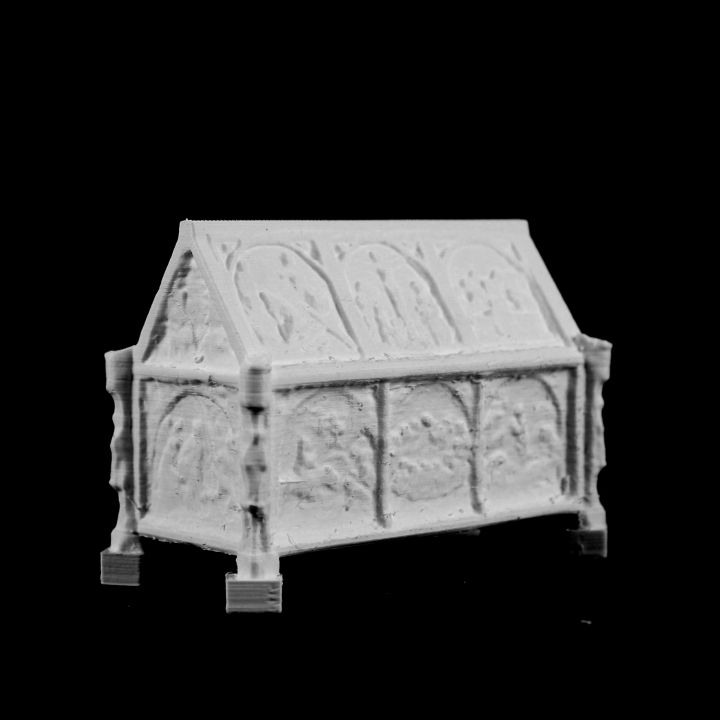
Reklama
3D tiskárny



AONN.cz
Sp┼Ö├ítelen├ę Weby
|
3D modely ARTReliquary Shrine at The Victoria and Albert Museum, London

A reliquary is a container for keeping holy relics safe. Relics, the physical remains of saints or of items associated with them, are venerated in the Christian tradition. The triangular-sectioned lid here is removable, allowing access to the relics. This reliquary is supposed to have held the relics of St Boniface (born about 675, died about 755). He was an English saint and martyr who preached the Gospel to the heathen tribes of Germany and the Low Countries. This reliquary is in the form of a house-shaped shrine. It depicts 16 scenes from the Passion of Christ. Various animals, scrolls, prophets, angels and saints decorate the carved reliefs. Originally the reliquary had pinnacles at each corner and a cresting. Given its age, it is remarkable that most of the original gilding survives. This reliquary is said to come from the church of the Franciscans at Constance. This is a very ancient town with a long ecclesiastical history, situated on the river Rhine in southern Germany. The carvings are similar to others that survive in the town. Several of them derive from engravings by Martin Schongauer (born about 1435-1450, died 1491), which he published between about 1470 and 1490. his reliquary, in the form of a house-shaped shrine, depicts sixteen scenes of the Passion in relief. These are placed on each of the longer sides, one on the small sides of both ends, six more on the sloping sides of the roof, and two on the gables. The sequence of the reliefs begins with three scenes on one of the longer sides: 1. Entry into Jerusalem, 2. The Last Supper, 3. The Agony in the Garden and continues on the small side with 4. The Taking of Christ, and on the other longer side with 5. Christ before Annas, 6. The Flagellation, 7. The Crowning with Thorns, and on the end with 8. The Bearing of the Cross. The narrative continues on the roof of the shrine with 9. Christ in Distress, 10. The Crucifixion, 11. The Entombment, then on the small side gable with 12. Christ in Limbo, and continues on the other side of the roof with 13. The Resurrection, 14. The Incredulity of St Thomas, 15. The Ascension of Christ, and concludes on the small-side gable with 16. The Trinity. All the reliefs are surmounted by a semi-circular arch. The spandrels contain crouching dogs, except the third scene which shows a monkey and an ibex, and the ninth scene which depicts a lion on the left side. The spandrels above scenes 9, 10 and 11 are decorated with foliated scrolls, while those of The Resurrection, The Incredulity of Thomas and The Ascension show the Two Maries, two prophets and two angels respectively. Standing under canopies are an angel, a prophet, St Stephen and St Catherine.The reliquary shrine consists of a rectangular container and triangular-sectioned lid which is removable. It is completely gilded on the outside; only the pupils, lips and eye-lids are painted black. The container comprises four panels along the sides, and one forming the bottom. The carved scenes on the four panels were carved integrally with their mouldings; the mouldings at the top are carved separately. Carved columns are attached at each corner, each with a figure attached, standing on a console, and with a canopy above. Holes drilled into the tops of each canopy show the original positions of the lost pinnacles. The moulding on top has five holes into which were fixed a now-lost cresting; the moulding with foliate scrolls surmounting the gables is carved separately. The head of the figure of St Stephen and the hands of the angel, are missing. The crockets of the triangular gables at each end are damaged. Most of the original gilding has been preserved, but is slightly damaged. n├íhodn├Ż v├Żb─Ťr model┼»
|
©Ofrii 2012
| |||